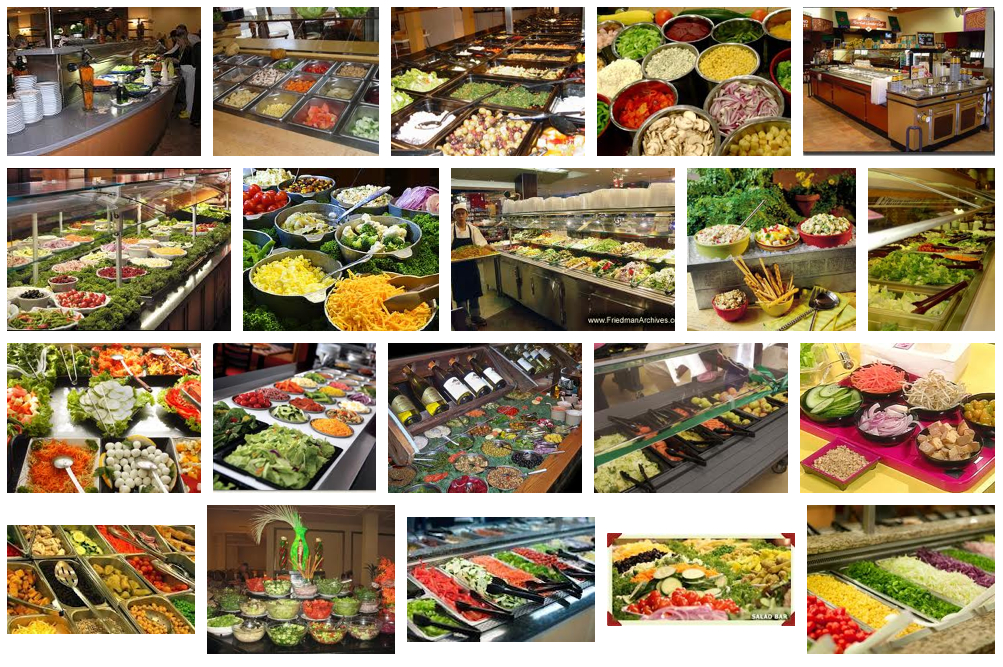It turns out that human behavior at the ubiquitous, self-serve salad bar in your suburban restaurant or hotel is a rather complex affair. There is a method to optimizing the type and quantity of food on one’s plate.
[div class=attrib]From the New Scientist:[end-div]
Competition, greed and skulduggery are the name of the game if you want to eat your fill. Smorgasbord behaviour is surprisingly complex.
A mathematician, an engineer and a psychologist go up to a buffet… No, it’s not the start of a bad joke.
While most of us would dive into the sandwiches without thinking twice, these diners see a groaning table as a welcome opportunity to advance their research.
Look behind the salads, sausage rolls and bite-size pizzas and it turns out that buffets are a microcosm of greed, sexual politics and altruism – a place where our food choices are driven by factors we’re often unaware of. Understand the science and you’ll see buffets very differently next time you fill your plate.
The story starts with Lionel Levine of Cornell University in Ithaca, New York, and Katherine Stange of Stanford University, California. They were sharing food at a restaurant one day, and wondered: do certain choices lead to tastier platefuls when food must be divided up? You could wolf down everything in sight, of course, but these guys are mathematicians, so they turned to a more subtle approach: game theory.
Applying mathematics to a buffet is harder than it sounds, so they started by simplifying things. They modelled two people taking turns to pick items from a shared platter – hardly a buffet, more akin to a polite tapas-style meal. It was never going to generate a strategy for any occasion, but hopefully useful principles would nonetheless emerge. And for their bellies, the potential rewards were great.
First they assumed that each diner would have individual preferences. One might place pork pie at the top and beetroot at the bottom, for example, while others might salivate over sausage rolls. That ranking can be plugged into calculations by giving each food item a score, where higher-ranked foods are worth more points. The most enjoyable buffet meal would be the one that scores highest in total.
In some scenarios, the route to the most enjoyable plate was straightforward. If both people shared the same rankings, they should pick their favourites first. But Levine and Stange also uncovered a counter-intuitive effect: it doesn’t always pay to take the favourite item first. To devise an optimum strategy, they say, you should take into account what your food rival considers to be the worst food on the table.
If that makes your brow furrow, consider this: if you know your fellow diner hates chicken legs, you know that can be the last morsel you aim to eat – even if it’s one of your favourites. In principle, if you had full knowledge of your food rival’s preferences, it would be possible to work backwards from their least favourite and identify the optimum order in which to fill your plate, according to the pair’s calculations, which will appear in American Mathematical Monthly (arxiv.org/abs/1104.0961).
So how do you know what to select first? In reality, the buffet might be long gone before you had worked it out. Even if you did, the researchers’ strategy also assumes that you are at a rather polite buffet, taking turns, so it has its limitations. However, it does provide practical advice in some scenarios. For example, imagine Amanda is up against Brian, who she knows has the opposite ranking of tastes to her. Amanda loves sausages, hates pickled onions, and is middling about quiche. Brian loves pickled onions, hates sausages, shares the same view of quiche. Having identified that her favourites are safe, Amanda should prioritise morsels where their taste-ranking matched – the quiche, in other words.
[div class=attrib]Read the entire article here.[end-div]
[div class=attrib]Image: salad bars: Courtesy of Google search.[end-div]

